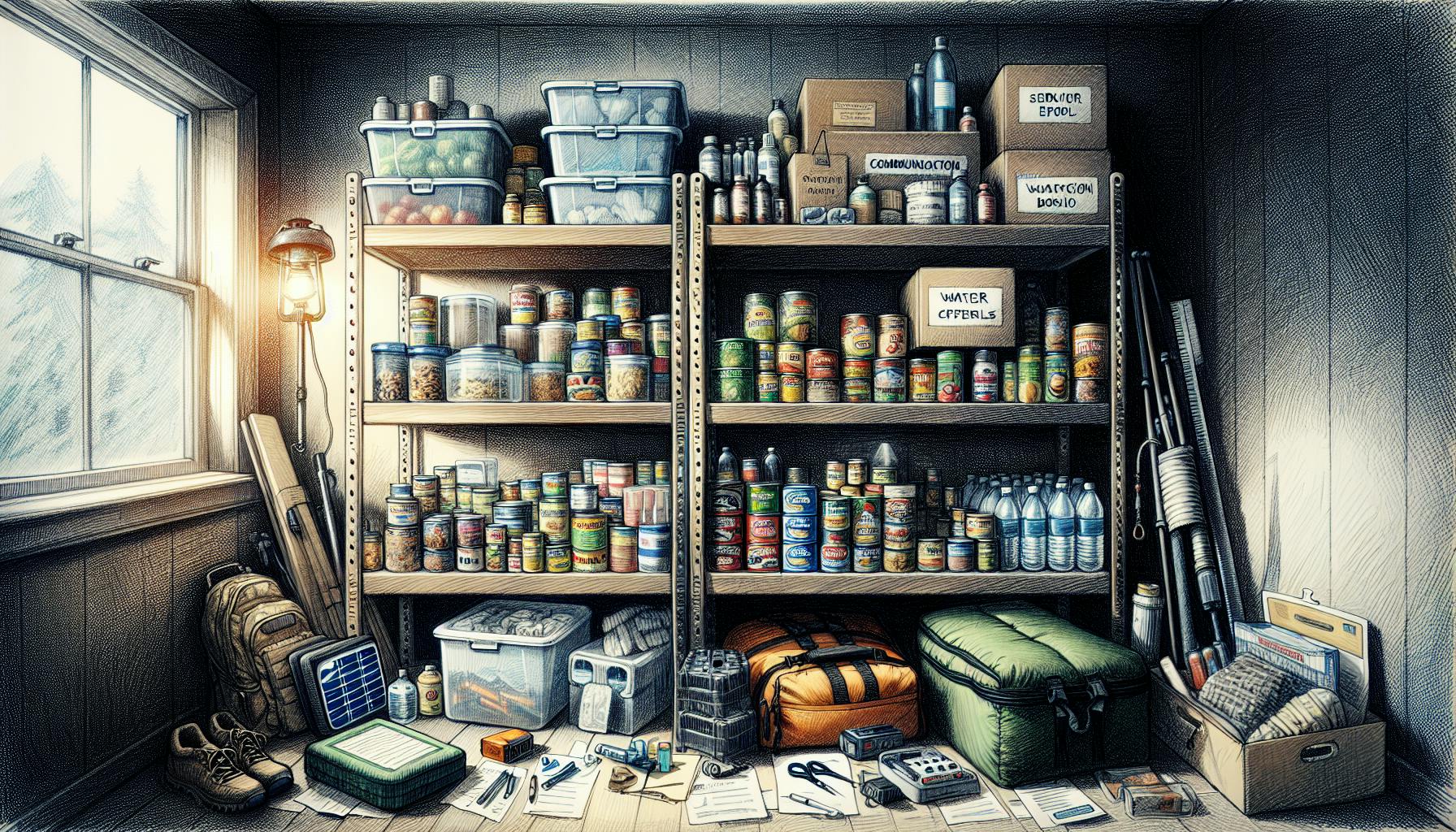A Brief History of MREs
Meals Ready-to-Eat, commonly known as MREs, have come a long way since their inception. The earliest precursors to MREs were the canned wet rations used by militaries in the early 1900s. However, these rations were heavy, bulky, and lacked variety.
The first modern MREs were developed in the late 1970s and early 1980s by the U.S. military's Natick Labs. They spent years researching and testing prototypes before unveiling the MRE to troops in 1981. These first generation MREs replaced the C-rations as the U.S. military's standard field ration.
Since then, MRE technology and recipes have continued to advance. In the 1990s, civilian companies like AlpineAire Foods and Mountain House began offering MREs marketed towards backpackers, emergency preppers, and survivalists. These commercial MREs focused more on providing variety, comfort foods, and better taste than their military counterparts.
Over the past 40+ years, MREs have evolved tremendously. Early MREs had a shelf life of only 18 months, while current MREs can last 5 years or more. Their packaging has become lighter but more durable as well. Dozens of entrée options are now available, a huge improvement from the very limited choices of the 1980s. Flameless ration heaters were also introduced in the 1990s, allowing quick and easy heating of meals.
What's Included in an MRE?
A standard MRE contains:
- Main entrée such as spaghetti, chili, or chicken breast
- Side dishes like rice, bread, crackers
- Dessert item like cookies or candy
- Powdered beverage mix
- Flameless heater to warm main entrée
- Accessories like seasoning, matches, and chewing gum
Diverse Entrée Options
There is a wide variety of main meal options in modern MREs. Popular choices include pastas, chilis, chicken dishes, Mexican foods, Asian stir-fries, seafood, and more. Civilian MREs focus more on providing comfort foods like lasagna or beef stew rather than the lower fat, lower salt options prioritized in military MREs. Having a diverse range of entrées is key for avoiding taste fatigue.
Some top selling civilian MRE main meals include:
- Chili mac
- Chicken alfredo
- Beef ravioli
- Sweet and sour pork
- Chili with beans
- Pasta primavera
- Thai chicken curry
- Teriyaki chicken
Snacks, Sides, and Extras
In addition to the main dish, MREs contain various snacks, side dishes, desserts, and accessories:
- Crackers, breads, muffins provide carbs
- Candies, cookies offer quick energy
- Nuts, seeds, and dried fruits for vitamins and fiber
- Powdered drinks like lemonade, coffee, tea
- Condiments such as hot sauce, ketchup, mustard
- Flameless ration heater to warm entrée and beverages
- Utensils like spoon, matches, and cleansing wipes
This wide assortment of sides gives extra energy and nutrients. The accessories improve the taste and experience of consuming MRE meals in the field.
Key Differences: Civilian vs Military MREs
There are some notable differences between civilian MREs designed for backpackers and emergency preppers compared to military MREs used in combat situations:
Nutrition and Calories
A military MRE aims to provide around 1300 calories with lower fat, cholesterol, and sodium. Civilian MREs range from 500-1500 calories depending on the specific meal and focus less on restricting fat, salt, or sugar. To avoid malnutrition, daily multivitamins are recommended when relying solely on MREs.
Taste and Variety
While taste has improved greatly, nutrition and practicality are still the priority in military MREs. Civilian MRE brands emulate favorite homestyle meals with better texture and flavor. They offer more variety with entire lines of different international cuisines. Popular options include dishes like jambalaya, pad thai, and buffalo chicken.
Storage and Durability
Military MREs are engineered to withstand rougher handling like parachute drops or extremes in temperature. Civilian MREs don't require the same level of durability since they're used for shorter time periods in less intense conditions.
Both types provide convenient, ready to eat meals when you don't have access to stoves or refrigeration though. Let's look closer at proper MRE storage and preparation.
Storing MREs for Maximum Freshness
To get the longest shelf life out of MREs:
- Store at temperatures between 60-80°F
- Avoid temperature extremes or fluctuations
- Use within 5 years for best quality
- Inspect pouches for damage before opening
- Discard any MREs with foul odors or visible mold
MREs will last for many years if stored properly. Keep them in a controlled, dry environment away from rodents, bugs, or other potential contaminants. Check and rotate your stock annually to use the oldest ones first.
Once opened,consume residual components within a few hours for food safety. Do not mix and match leftovers from multiple MRE bags.
Heating MREs to the Perfect Temperature
MREs contain handy flameless ration heaters that produce heat through a magnesium-iron exothermic reaction when water is added:
- Read heater instructions first and carefully
- Only use heater for entrée, not full MRE pouch
- Add ration heater and entrée pouch into secondary bag
- Pour in specified amount of water into heater
- Agitate for even heating, avoiding overheating
- Open heated pouch carefully to prevent burns
- Consume heated entrée promptly after warming
This compact heater allows you to enjoy a hot meal without any other equipment needed. Always use caution when handling freshly heated pouches to avoid injury.
Recommended Uses for MREs
MREs provide a wide range of benefits:
Emergency and Survival Preparedness
MREs are a critical part of any emergency kit, bug out bag, or disaster supply cache. With minimal space, they provide nutritious meals for several days when you can't cook. Rotate stock annually and incorporate MREs into practice drills.
Camping and Outdoor Recreation
MREs are an convenient option for camping trips, hunting excursions, and other outdoor activities when refrigeration is difficult. They're portable and eliminate the need to start a cooking fire. MREs also add nice variety to repetitive freeze dried camping foods.
International or Restricted Travel
MREs are great for travel to remote areas or foreign countries where food options may be unreliable. They are also allowed in places with strict rules against fires, stoves, or cooking. MREs provide familiar, shelf-stable meals without refrigeration needed.
Military and MRE Testing Applications
MREs serve as critical field provisions for military operations, exercises, and deployments. For civilians, MRE reviews and taste tests have also become popular online.
Responsible MRE Use and Disposal
Like any food, MREs have some environmental considerations:
- Supplement MRE diet to avoid vitamin deficiency
- Pack out all trash when using MREs outdoors
- Recycle packaging when possible
- Discard heaters, matches in proper waste stream
- Never litter empty MRE bags or accessories
By rotating stock, eating a balanced diet, and disposing of each pouch properly, MREs can be an integral part of your emergency preparedness, outdoor adventures, or international expeditions.
Conclusion
MRE technology has advanced extensively since its origins in the 1970s. With convenient packaging, 5+ year shelf life, and built-in flameless heaters, MREs provide nutritious ready to eat meals anytime cooking is difficult. While military and civilian MREs differ in their priorities, both help you stay energized and fed in the field. For preppers, survivalists, and outdoor enthusiasts alike, MREs are a versatile addition to your supplies.


